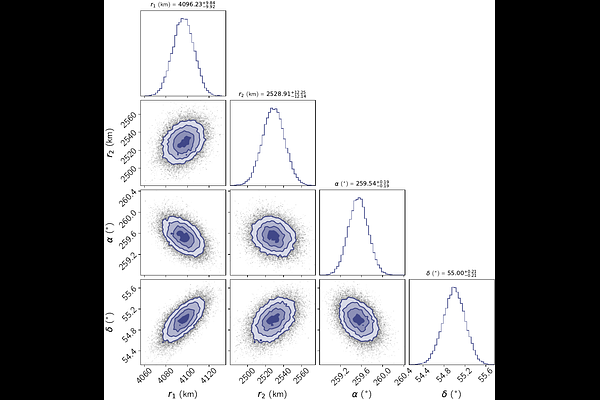Constraints on Quaoar's rings and atmosphere from JWST/NIRCam observations of a stellar occultation

Constraints on Quaoar's rings and atmosphere from JWST/NIRCam observations of a stellar occultation
Benjamin Proudfoot, Bryan Holler, Ko Arimatsu, Flavia Rommel, Cameron Collyer, Estela Fernández-Valenzuela
AbstractObservations of stellar occultations have revealed that small bodies are capable of hosting ring systems. The trans-Neptunian object (TNO) Quaoar, is the host of an enigmatic ring system, with two rings located well-outside the Roche limit. To better understand these structures, we observed a stellar occultation by Quaoar and its rings using the James Webb Space Telescope's (JWST) NIRCam instrument. Our observations detect both known rings, although Q2R -- the inner known ring -- is not detected on both sides of Quaoar, showing that it has substantial azimuthal variations similar to Q1R -- the outer ring. We also fit a model of the ring radii and pole orientation of the ring system, which confirms that Quaoar's spin-orbit and Weywot's mean motion resonances (especially Weywot's 6:1) may play a role in the rings' confinement and stability. In addition to examination of Quaoar's ring system, we also use our observations to place upper limits on a putative CH$_4$ atmosphere around Quaoar, finding that no global atmosphere with surface pressure $>1$ nbar can exist (at 3$\sigma$ significance). The lack of atmosphere supports the hypothesis that atmospheric processes are not the source of Quaoar's recently discovered inventory of light hydrocarbons.